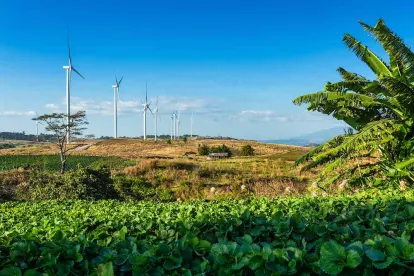As governments around the world continue to find ways to support the development and emergence of a hydrogen economy, to date the United States has trailed many other countries that have created national strategies and committed financial resources to the nascent energy source. Recent developments, however, indicate that the United States may be poised to take a leading role in the promotion and advancement of hydrogen at scale. Two issues in particular present potentially significant opportunities for the hydrogen industry: the announcement of the U.S. Department of Energy’s (DOE) Earthshot – Hydrogen Shot Program and the introduction by U.S. Senator Tom Carper of tax incentive legislation specifically targeting clean hydrogen. This alert provides a high level look at each of these developments. For additional detail on either of these issues, please contact the authors or a member of the K&L Gates Hydrogen Team.
DOE HYDROGEN SHOT PROGRAM
On 7 June, U.S. Secretary of Energy Jennifer M. Granholm announced the DOE Energy Earthshots Initiative. The program is intended to rapidly advance breakthroughs of clean energy solutions within the next ten years. Notably, the first earthshot is the Hydrogen Shot, which aims to reduce the cost of clean hydrogen by 80 percent to US$1 per kilogram in a decade. At present, renewable or green hydrogen costs up to five times that, creating obstacles for economically viable green hydrogen.
Hydrogen Shot seeks to achieve this goal through the Biden Administration’s American Jobs Plan, which would provide a foundation for the deployment and expansion of clean hydrogen development. Specifically, the American Jobs Plan would allow for federal investment in 15 decarbonized hydrogen demonstration projects in distressed or disadvantaged communities, combined with a federal tax credit for the production of hydrogen. These projects could expand on the existing H2@Scale initiative that seeks to use the hydrogen produced from reforming natural gas for power generation, chemical production, and fuel production.
As part of the launch of the Hydrogen Shot, the DOE Hydrogen Program issued a request for information (RFI) on hydrogen demonstrations that can help achieve the program goals. These goals include decreasing the price of hydrogen, but also reducing carbon emissions and air pollution, creating good-paying jobs, and providing benefits to disadvantaged communities. DOE’s RFI seeks information in five categories:
-
Regional hydrogen production, resources, and infrastructure.
-
DOE is searching for specific regions that have the resources available to support clean hydrogen production and infrastructure.
-
-
End users for hydrogen in the region, cost, and value proposition.
-
DOE is searching for businesses that serve, or could serve, as an end user for regional hydrogen production.
-
DOE is searching for businesses that serve, or could serve, as an end user for regional hydrogen production.
-
DOE is searching for the potential of hydrogen storage as a source of backup power to improve power grid resiliency.
-
-
Greenhouse gas and pollutant emissions reduction potential.
-
DOE is searching for anticipated emissions reduction from the hydrogen plant, and a specific timeframe in which those reductions would occur.
-
-
Diversity, equity, and inclusion (DEI), jobs, and environmental justice.
-
DOE is searching for opportunities that would improve DEI, increase jobs, and improve environmental justice for underserved and vulnerable communities.
-
-
Science and innovation needs and challenges.
-
DOE is searching for research and innovation that must be completed in order to effectively complete a demonstration project.
-
Notably, this request for information is not a funding opportunity announcement, and DOE is not accepting applications to receive funding yet. As such, DOE recommends that proprietary information not be included in any responses to the RFI, as such information may become public.
Responses to this RFI must be submitted electronically to HFTORFI@ee.doe.gov before 5:00 p.m. on 7 July 2021.
CLEAN H2 PRODUCTION ACT (S.1807)
On 25 May, U.S. Senator Tom Carper, a Democrat from Delaware, introduced new legislation, S. 1807, which would establish a production tax credit (PTC) and an investment tax credit (ITC) for “clean hydrogen” and “clean hydrogen production facilities.” This represents a major development for the hydrogen industry as a tax incentive specifically aimed at benefitting the advancement of hydrogen, as opposed to prior clean energy tax credits which have been more technology-neutral in their applicability.
Under the proposed legislation, “clean hydrogen” is defined as “hydrogen which is produced through a process that, as compared to hydrogen produced by steam-methane reforming of non-renewable natural gas, achieves a percentage reduction in lifecycle greenhouse gas emissions which is not less than 50 percent.” A “clean hydrogen production facility” is defined as “a facility owned by the taxpayer which produces qualified clean hydrogen which, with respect to any taxable year, is sold by the taxpayer to an unrelated person or used by the taxpayer ... and … the construction of which begins before 1 January 2030.” The legislation also includes wage and certain labor requirements for workers at such a qualified facility.
-
The proposed PTC is based on the number of kilograms of hydrogen produced at a clean hydrogen production facility, and how much that facility reduces emissions.
-
Clean hydrogen facilities which reduce lifecycle greenhouse gas (GHG) emissions by less than 75 percent from steam-methane reforming will receive US$0.60 for each kilogram of hydrogen produced.
-
Clean hydrogen facilities which reduce GHG emissions by 75-85 percent relative to steam-methane reforming will receive US$0.75 for each kilogram of hydrogen produced.
-
Clean hydrogen facilities which reduce GHG emissions by 85-95 percent relative to steam methane-reforming will receive US$1.02 for each kilogram of hydrogen produced.
-
Clean hydrogen facilities which reduce GHG emissions by greater than 95 percent relative to steam-methane reforming will receive US$3.00 for each kilogram of hydrogen produced.
-
-
The proposed ITC amends the IRS Code of 1986 to include a tax credit for investment into facilities which meet the same requirements as the PTC.
-
Clean hydrogen facilities which reduce lifecycle GHG emissions by less than 75 percent from steam-methane reforming will receive 20 percent of the energy percentage under subparagraph A(ii).
-
Clean hydrogen facilities which reduce GHG emissions by 75-85 percent relative to steam-methane reforming will receive 25 percent of the energy percentage under subparagraph A(ii).
-
Clean hydrogen facilities which reduce GHG emissions by 85-95 percent relative to steam methane-reforming will receive 34 percent of the energy percentage under subparagraph A(ii).
-
Clean hydrogen facilities which reduce GHG emissions by greater than 95 percent relative to steam-methane reforming will receive 100 percent of the energy percentage under subparagraph A(ii).
-
-
This bill allows clean hydrogen facilities to receive tax rebates for using methods that would reduce carbon emissions relative to older methods of hydrogen production.
WHAT’S NEXT?
The Carper bill joins a group of proposals aimed at boosting clean hydrogen production through the creation of a new hydrogen tax credit or an expansion of existing credits. These include provisions in the Administration’s Green Book (part of the FY 2022 budget recommendations), the recent Senate Finance Committee mark-up of clean energy policies, the House’s Green Act, and stand-alone proposals from Sen. Martin Heinrich (D-NM) and Sens. Todd Young (R-IN) and Sheldon Whitehouse (D-RI). Policies from one or more of these proposals are likely to be imported into an infrastructure bill expected to move in the coming weeks as Democrats are expected to move forward on a bipartisan basis using the budget reconciliation process.
Ultimately, these two developments begin to send a signal to the market that the United States is committed to the robust development of the hydrogen economy and begin to lay the foundation for investors and project developers looking to advance hydrogen opportunities.






 />i
/>i

